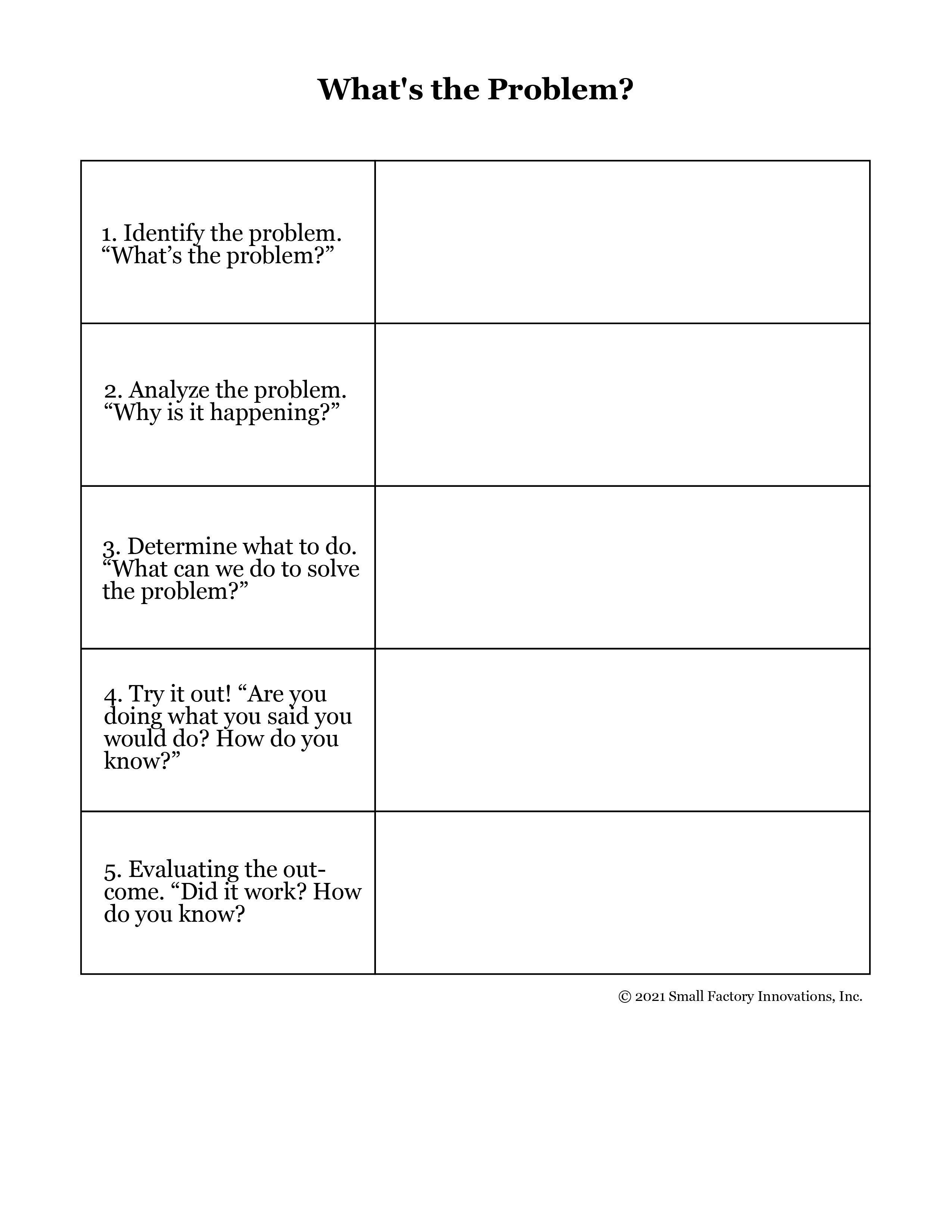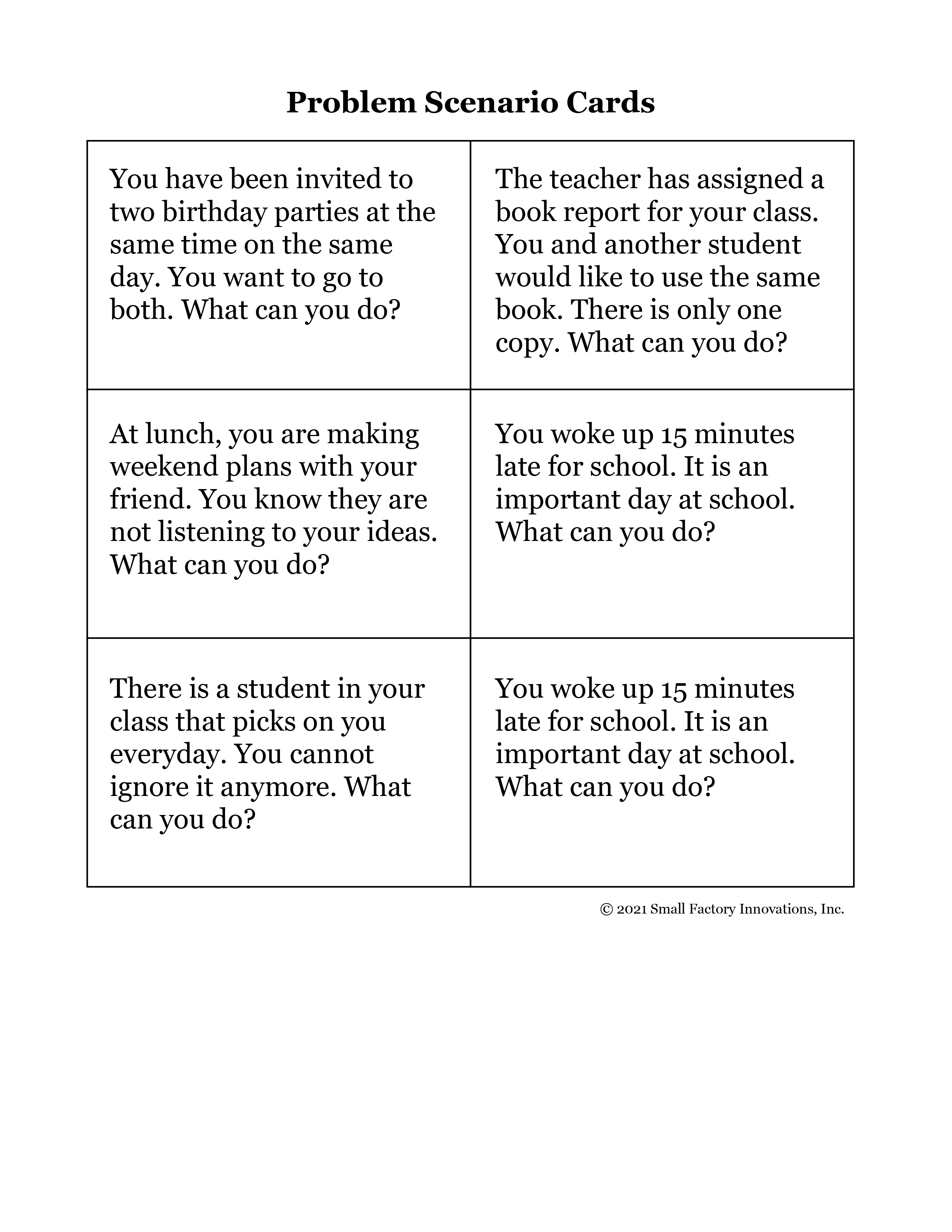
Improve life outcomes
Jumpstart: Problem Solving - Universal
Foundational
CASEL Competency Focus: Responsible Decision Making
Time: 20-30 minutes
Materials: Problem Solving Handout (Included) or Chart Paper/Board, Writing Utensils, Social Scenario Cards (Included), game links: Wordle For Kids, Problem Solving Games
Objectives:
1. Accept and generate a solution to solve a presented/given social problem.
2. Identify flexible behaviors that may help solve a given/presented social situation.
3. Generate new ideas to solve open-ended questions or assignments.
Definitions of Key Terms:
- Critical Thinking: The process of investigating and asking questions to gain information or solve a problem.
- Flexible Thinking: The ability to see other solutions or process to answer questions and solve problems; understanding there is more than one way to do something.
Lesson Procedures
Introduction: Problem Solving is not just for Math and Science. This skill is vital in establishing and maintaining interpersonal relationships in any social setting. Problem solving involves critical and flexible thinking. Oftentimes, this is a difficult concept for students to pick up without intentional instruction. This lesson offers discussion points and activities to help teach students the problem solving process. The problem solving method contains five steps. Use the handout below or draw the method on the board to review and introduce this process. You will be using this handout/drawing to work through the game below.
Game Time: What's the Problem?
Solving problems, especially those related to social situations can be difficult for students and adults alike. Critical thinking may be difficult for some. Practicing problem solving in a fun way provides students a low stress environment that helps students feel more comfortable with the possibility of making a mistake or becoming frustrated. To play, divide the class into groups of three or four. Give each group a social scenario to solve. You may create your own scenarios or use the ones provided below. Give students five to ten minutes to review their scenario and complete the problem solving method to provide a solution to the problem and create a skit using the solution they were given. Allow time for students to perform the skit in front of others.
Application: Me Too!
This activity not only addresses problem solving, it also encourages positive social interactions among students. Break students into groups of three or four students. Set the timer for five minutes. During this time students work as a group to determine something all members of the group have in common. Examples; same number of siblings, “favorites,” all wearing blue, etc. Have each group share what they have in common. Ask students to describe how they went about determining what they have in common.
Try it out!
Most of us enjoy playing online games during our free time (think Candy Crush). Our students are no different. Provide the following problem solving game links during down time or when a student has completed their work. Online games are a fun way to practice problem solving! Wordle has become wildly popular. Click here for Kids Wordle. Click here to access more online problem solving activities.

